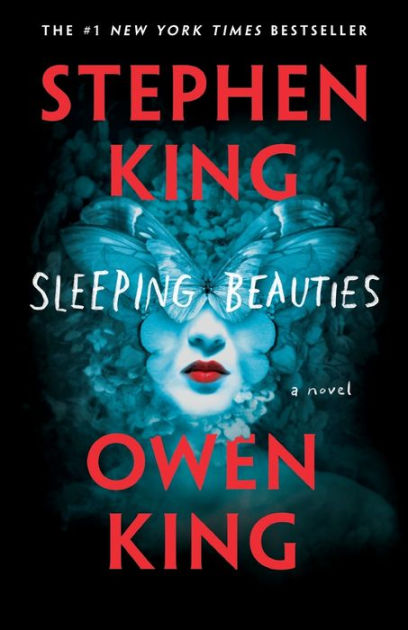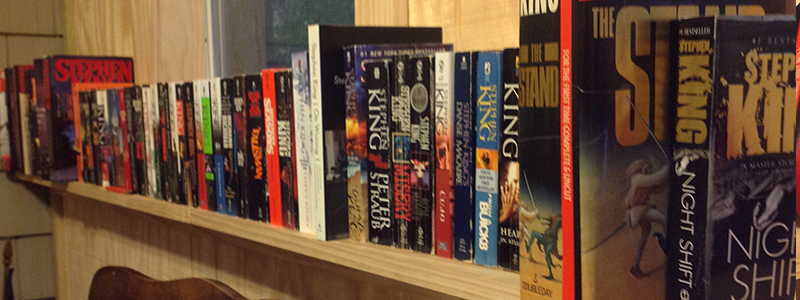The plan is to reread all of Stephen King’s works in the order that they were published. Richard Chizmar of Cemetery Dance had the vision. I’m doing it because I am a writer and I want to improve my fiction. And I love Stephen King’s stories. I think there is something to be learned through this process.
You can also go back to the beginning and read Before Carrie or any of my other posts up through this one and beyond by checking out this link to the Master List of all my #StephenKingRevisited posts.

I have a lot of trouble with Stephen King’s collaborations. I’m sure it is more of a mental bias than it is fully an objective measure of the quality of the works. I’m very forgiving of Stephen King books in a way that I’m not as much with other authors’ work. I’m always rooting for authors when I pick up a book, and I tend to look for the best in it by nature. This grace is magnified in my mind when reading King. The introduction of another author tinkers with that formula for me for some reason.
Sleeping Beauties by Stephen King and his son Owen King, an accomplished author himself, managed to break through that odd collaboration bias with me. I enjoyed and appreciated Gwendy’s Button Box more on the revisit, but still would rank it lower in King’s catalog of work, especially in this modern era with so many exceptional works back-to-back. Sleeping Beauties may benefit by comparison coming so soon after Gwendy.
The print interview with Stephen and Owen King in the back of the book was interesting and very telling about their process. The men wrote their own sections, but left scenes missing in the middle with instructions about what they wanted. Then, the other author filled that in. It was an effort to foil any attempts to identify who wrote what. They also rewrote each other quite often. They strove for a third voice between their individual voices, and I think they came very close to achieving that. They also made deep cuts between the even longer early drafts and this still long finished work. They left out the formation of a government in “Our Place.” While that might have been interesting, it served the story not to dive into it. That might have been a temptation I would have succumb to were I writing a similar story. They also left some character threads unexplored which I think was for the best as well.
This novel had a massive number of characters. Nothing wrong with that, but I always know I’m in trouble when there is a character list at the beginning of the novel. I endeavored to read through it before starting, but it went on for pages, so I just started reading. There was a similar list at the beginning of Under the Dome, but I got along fine without it. I’d find myself reading through a new section in Sleeping Beauties and would be three or four paragraphs in before I remembered who the character was. I lost track of the races of characters too which was significant in a few places. I know the character list was there to refer back to between sections just for that reason, but I didn’t. In Under the Dome, the scenes were easy to follow with minor characters because remembering who they were related to and who they had interacted with prior wasn’t always significant to the action. In Sleeping Beauties, even minor characters had major work to do in scenes, so it all mattered. I wasn’t lost in the story, but the character load was heavy.
However, characters were well-placed to move the story along at key moments.
It felt like a long path into the story. Knowing the premise of the story made it feel a little longer because it was a while before that key “what if” became the focus of what was happening.
The rabbit scene was good. Small business, but well written.
Stephen K has a way of writing animal characters that is interesting and really good. This story diverged widely from that style, but was still excellent. I have to believe that animal-to-animal communication that leaned harder into fantasy was Owen K’s influence.
“Getting old you forget what you want to remember and remember what you want to forget.” Great line.
Describing things as milkweed fluff has to be Stephen K. He’s been doing that for several books in a row. “Face clinched like a fist” is all Stephen King too. It’s one of his new favorite phrases.
There are references to “Let it Go” from Frozen. Rhonda Rousey gets a shoutout. There is a tourist trap in South Carolina called Pedro’s South of the Border. It is probably borderline racist. Stephen King has been obsessed with the place over a few different stories, dropping it as a geographic point of reference even in stories that aren’t set in the Carolinas.
The descriptions of all the things women tried to do to stay awake were exhausting, which they were supposed to be if you felt what the characters were feeling. Perfectly written. Added to the stakes of the story. The mosaic of the women coping with the reality was rich and varied.
I was surprised the guards carried firearms in the women’s prison. Stephen and Owen talked about visiting a prison like the one in the story and talking through procedure with the officials there, so I imagine that detail has to be accurate.
Joe Hill books are mentioned in the prison library. For those not in the know, that is Stephen King’s other son.
They unrolled the process of discovery of what lay beyond the tree very well. Understanding of what it all was and what it all meant did not come all at once and only when it had to. The subtle and not-so-subtle comparisons of the women’s world versus the men’s world were well done.
The fantasy elements of time moving differently, worlds beyond the portal, and emissaries was all handled well.
The final assault was told masterfully. Tragic deaths on both sides of the tree.
The final release of tension was a little cheesy. Some of the political shifts as well felt a little forced. A lot of the changes were justified by the significant experiences of the women on the other side of the veil of sleep. While that is a valid justification, not every woman experienced what the small pocket of the town of our main characters did. While the events in the world were significant for the days the women were out of commission, many of the sweeping national and global changes would be harder to justify based on that one trauma alone without everyone going through what the women in this town did.
For all the good that came, there was great sadness in the ending as bittersweet life rolled on.
It’s a strong and unique story from King and King. Maybe his best collaboration by far. Certainly in the top half of all the books he’s written.
My next post in this series will be Before the Outsider which will be linked on the Master List of all my Stephen King Revisited posts.





